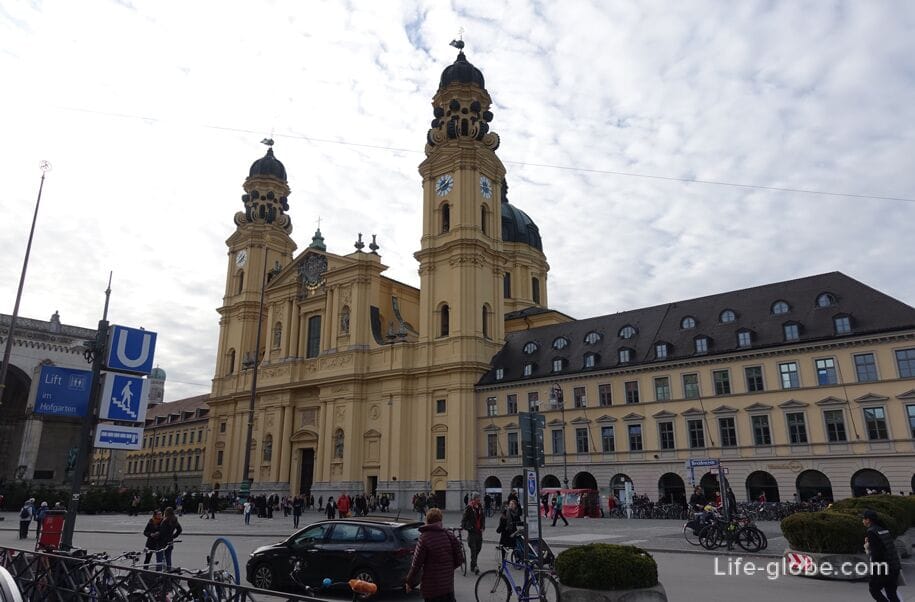
Teatinerkirhe the Theatre Church, also known as the Church of St. Kajetan, sometimes as a St. Gaetan (Theatinerkirche St. Kajetan), a Catholic Church, which was a Palace, Cathedral, and Church of the order of Theatines.
The Church was established in gratitude for the birth of the long-awaited heir to the Bavarian crown, Prince max Emanuel in 1662. The parents of Prince Ferdinand Maria of Bavaria and his wife Henriette Adelaide of Savoy.
The initial sample for Theatinerkirche was the main theatines the Church of Sant'andrea della Valle in Rome. Tamerlaine the first architect of the Church was Agostino barelli.
The first stone of the Shrine was laid in 1663. Sanctification, by that time still unfinished Church took place in 1675. Long the construction work caused by the fact that for a very long time could not come to a consensus on what, ultimately, should be the facade of the Church. Finally the Church was completed only in 1768.
The Church had an adjacent monastery. Together the Church and cloister formed a large quadrangle.
"The ancestor" of the Church - Henriette of Savoy, unfortunately, never saw the finished Teatinerkirhe. Henrietta died in 1676.
The Church was built in Italian high Baroque, was the first Church of its kind in Bavaria and it became the model for other Church buildings of high Baroque in Bavaria.
The exterior of the Church is impressive stylistic harmony is reflected in every detail of the facade, including decorative and sophisticated design, in which two high the bell tower with a clock, a triangular pediment and a large dome height of 70 meters harmoniously with intricate moldings and details in the decoration of the facade.
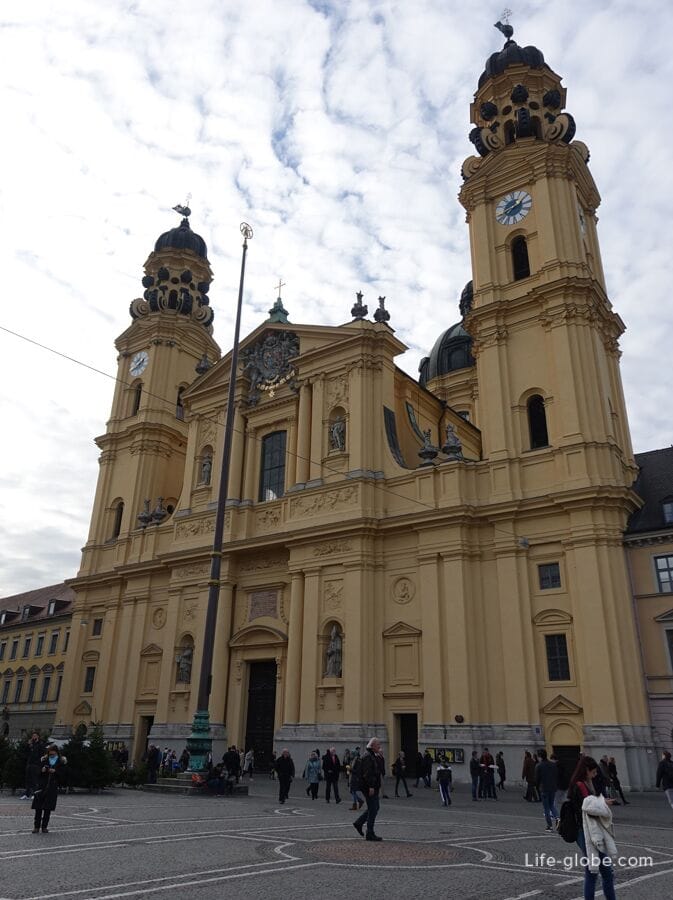
The interior of the Church in England, made in bright colors and richly decorated with stucco in the Baroque and Rococo.
The main hall of the Church divided by massive pillars with arched ceiling. Especially attractive are the high main altar with statues and painting of Gaspar De Cryer which shows, including Madonna.

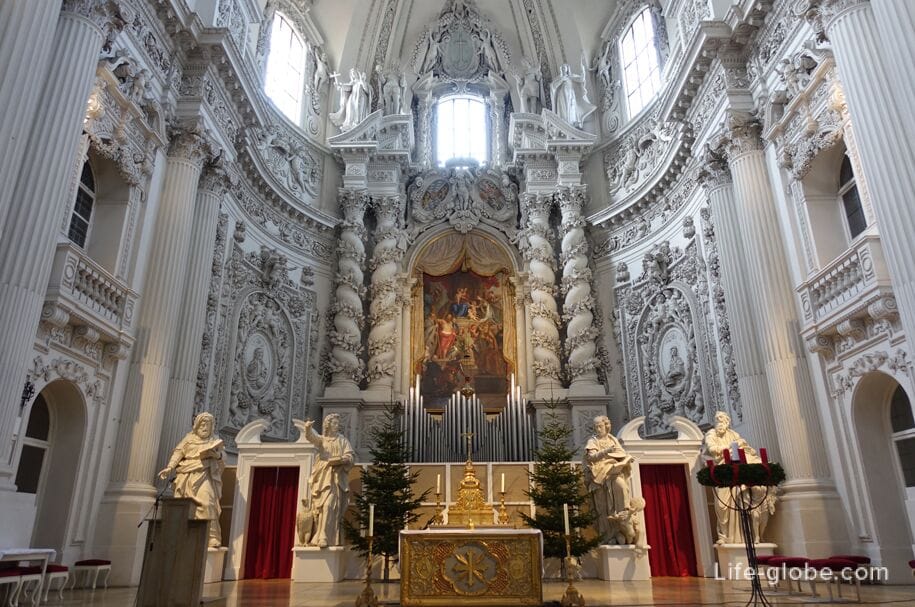

The chair a dark color also attracts attention. She's bright spot stands out against the bright interior of the Church.
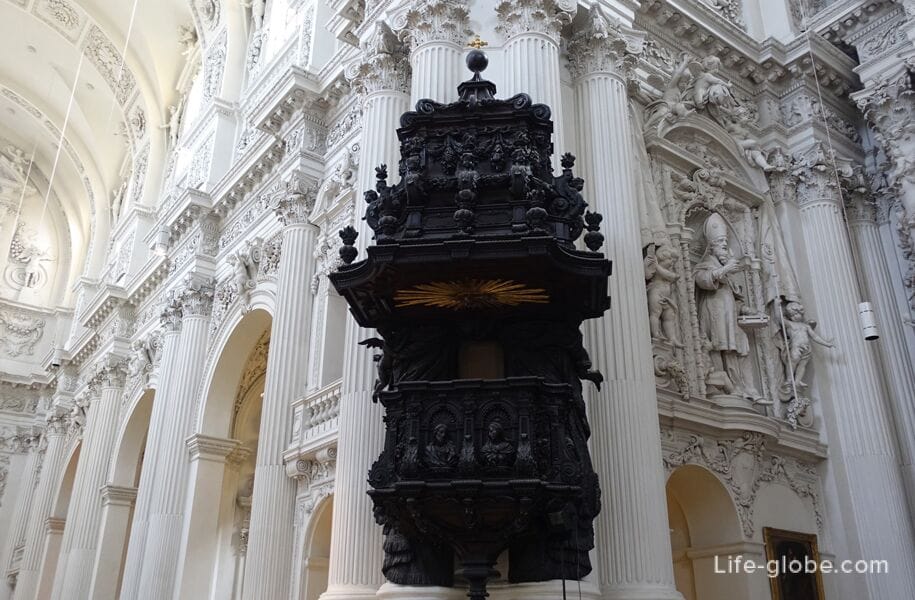
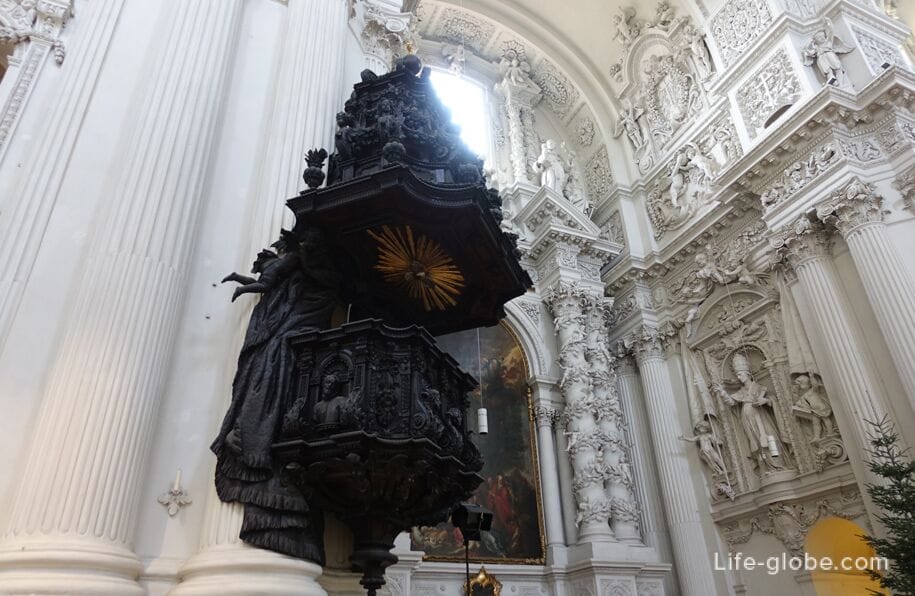
In addition to the above, the walls of Theatinerkirche are also side altars, valuable works of art and three organs: the main organ 1960, is located behind the main altar in the choir room, side on 1950's in the box right in front of the chair and a portable organ 2018.
Since Teatinerkirhe acted, inter alia, as a court of the Church, - the Church is a crypt (the Royal tomb), which served as tombs for the ruling Bavarian dynasty of Wittelsbach. Currently buried in the tomb of the 49 members of the dynasty, including Henriette Adelaide of Savoy, three kings, the Prince Regent Luitpold and the Emperor Charles VII.
The crypt is open from 1 may to 1 November: Monday to Saturday, from 11:30 to 15:00 hours, except days of religious holidays (exception: All Saints day).
The princely crypt, the sarcophagus of the Greek king Otto I

Teatinerkirhe is located on the Northern edge of Munich's Old town and is part of the magnificent ensemble of the one of the most impressive squares in Munich - Odeonsplatz square (Odeonsplatz).
Teatinerkirhe address: Salvatorplatz 2A.
Site Teatinerkirhe: room.
Besides the Church on the square Odeonsplatz is also notable: My Palace, Feldherrnhalle - "Hall of the Bavarian generals", a wing of the Munich residence, the main entrance to the Hofgarten Park, a monument to Ludwig I, as well as the commercial building Market, the former concert hall Odeon and Palace of Leuchtenberg, built by the architect Leo von Klenze in the expansion of cities and construction ludwigstraße street (Ludwigstraße).
A view of the Theatre Church on the left, My Palace on the right, and the ground-floor from the main entrance to the Hofgarten
